
The Battle of Pharsalus was the decisive battle of Caesar's Civil War fought on 9 August 48 BC near Pharsalus in Central Greece. Julius Caesar and his allies formed up opposite the army of the Roman Republic under the command of Pompey. Pompey had the backing of a majority of Roman senators and his army significantly outnumbered the veteran Caesarian legions.
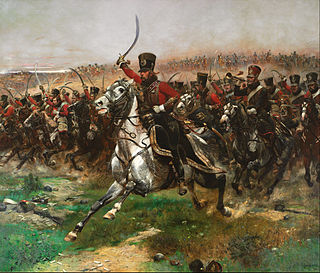
Historically, cavalry are soldiers or warriors who fight mounted on horseback. Cavalry were the most mobile of the combat arms, operating as light cavalry in the roles of reconnaissance, screening, and skirmishing in many armies, or as heavy cavalry for decisive shock attacks in other armies. An individual soldier in the cavalry is known by a number of designations depending on era and tactics, such as a cavalryman, horseman, trooper, cataphract, knight, drabant, hussar, uhlan, mamluk, cuirassier, lancer, dragoon, or horse archer. The designation of cavalry was not usually given to any military forces that used other animals for mounts, such as camels or elephants. Infantry who moved on horseback, but dismounted to fight on foot, were known in the early 17th to the early 18th century as dragoons, a class of mounted infantry which in most armies later evolved into standard cavalry while retaining their historic designation.

The charge at Krojanty, battle of Krojanty, the riding of Krojanty or skirmish of Krojanty was a Polish cavalry charge on the evening of 1 September 1939, the first day of the Second World War, near the Pomeranian village of Krojanty. It occurred at the start of the invasion of Poland and was part of the larger Battle of Tuchola Forest. Polish soldiers advanced east along the railway to a railroad crossroads 7 kilometres (4.3 mi) from the town of Chojnice, where elements of the Polish cavalry charged and dispersed a German infantry battalion. Machine gun fire from German armoured cars that appeared from a nearby forest forced the Poles to retreat. However, the attack delayed the German advance, allowing the Polish 1st Rifle Battalion and Czersk Operational Group to withdraw safely.
The Battle of Zama was fought in 202 BC in what is now Tunisia between a Roman army commanded by Scipio Africanus and a Carthaginian army commanded by Hannibal. The battle was part of the Second Punic War and resulted in such a severe defeat for the Carthaginians that they capitulated, while Hannibal was forced into exile. The Roman army of approximately 30,000 men was outnumbered by the Carthaginians who fielded either 40,000 or 50,000; the Romans were stronger in cavalry, but the Carthaginians had 80 war elephants.
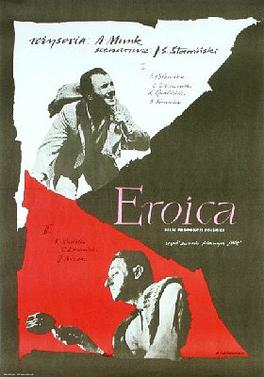
Eroica is a 1958 Polish film by Andrzej Munk, and his second feature film after Man on the Tracks (1956). Eroica is composed of two separate stories, presenting satirical critiques of two aspects of the Polish character: acquisitive opportunism, and a romantic fascination for heroic martyrs.

The Italian front was one of the main theatres of war of World War I. It involved a series of military engagements in Northern Italy between the Central Powers and the Allies of World War I from 1915 to 1918. Following secret promises made by the Allies in the 1915 Treaty of London, the Kingdom of Italy entered the war on the Allied side, aiming to annex the Austrian Littoral, northern Dalmatia and the territories of present-day Trentino and South Tyrol.
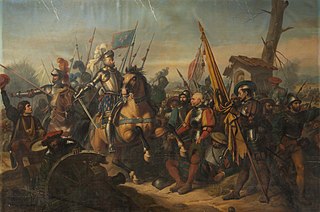
The Battle of Ceresole took place on 11 April 1544, during the Italian War of 1542–1546, outside the village of Ceresole d'Alba in the Piedmont region of Italy. A French army, commanded by François de Bourbon, Count of Enghien, defeated the combined forces of the Holy Roman Empire and Spain, commanded by Alfonso d'Avalos d'Aquino, Marquis del Vasto. Despite having inflicted substantial casualties on the Imperial troops, the French subsequently failed to exploit their victory by taking Milan.

Baron Amedeo Guillet was an officer of the Italian Army and an Italian Diplomat. Dying at the age of 101, he was one of the last men to have commanded cavalry in war. He was nicknamed Devil Commander and was famous during the Italian guerrilla war in Ethiopia in 1941, 1942 and 1943 because of his courage.

The Battle of Valls was fought on 25 February 1809, during the Peninsular War, between a French force under Laurent Gouvion Saint-Cyr and a Spanish force under Theodor von Reding. Fought near the town of Valls in Catalonia, Spain, the battle ended in a French victory. General Reding was fatally wounded during a cavalry charge against French cavalry.

Shock tactics, shock tactic, or shock attack is the name of an offensive maneuver which attempts to place the enemy under psychological pressure by a rapid and fully-committed advance with the aim of causing their combatants to retreat. The acceptance of a higher degree of risk to attain a decisive result is intrinsic to shock actions.
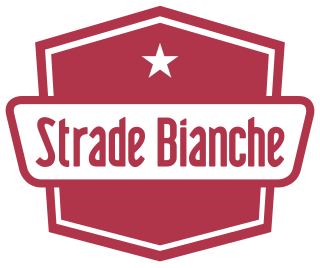
The Strade Bianche is a road bicycle race in Tuscany, Central Italy, starting and finishing in Siena. First held in 2007, it is raced annually on the first or second Saturday of March. The name Strade Bianche stems from the historic white gravel roads in the Crete Senesi, which are a defining feature of the race. One-third of the total race distance is raced on dirt roads, covering 63 km (39 mi) of strade bianche, spread over 11 sectors.

Étienne-Marie-Antoine Champion, comte de Nansouty was a French cavalry commander during the French Revolutionary Wars who rose to the rank of General of Division in 1803 and subsequently held important military commands during the Napoleonic Wars.

The use of horses in World War I marked a transitional period in the evolution of armed conflict. Cavalry units were initially considered essential offensive elements of a military force, but over the course of the war, the vulnerability of horses to modern machine gun, mortar, and artillery fire reduced their utility on the battlefield. This paralleled the development of tanks, which ultimately replaced cavalry in shock tactics. While the perceived value of the horse in war changed dramatically, horses still played a significant role throughout the war.
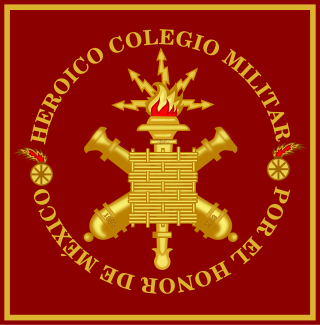
The Heroic Military College is the major military educational institution in Mexico. It was founded in 1823 and located in the former Palace of the Inquisition in Mexico City. Initially designated as the Cadet Academy, it was renamed in 1823 as the Colegio Militar. The college was relocated in Perote, Veracruz, before being returned to Mexico City, where it was established in the Betlemitas monastery. From 1835, the Military College was located in the Recogidas Building. Cadets training for the Mexican Navy originally formed part of the student body, but in 1897, the Military Naval School was established as a separate institution in Veracruz.

Jean-Louis-Brigitte Espagne, Count d'Espagne and of the Empire was a French cavalry commander of the French Revolutionary Wars, who rose to the top military rank of General of Division and took part in the Napoleonic Wars.
The Battle of Pozzuolo del Friuli was fought during World War I on 30 October 1917, between the Italian II Cavalry Brigade and two infantry battalions of the Infantry Brigade "Bergamo", against two divisions of the German Imperial Army and one division of the Austro-Hungarian Army at Pozzuolo del Friuli.
The Charge of the "Savoia Cavalleria" at Izbushensky was a clash between the Italian cavalry Regiment "Savoia Cavalleria" (3rd) and the Soviet 812th Rifle Regiment that took place on August 24, 1942, near the hamlet (khutor) of Izbushensky (Избушенский), close to the junction between the Don and Khopyor rivers. Though a minor skirmish in the theatre of operation of the Eastern Front, the Izbushensky charge had great propaganda resonance in Italy and it is still remembered as one of the last significant cavalry charges in history.

The Regiment "Lancieri di Novara" (5th) is a cavalry unit of the Italian Army based in Codroipo in Friuli Venezia Giulia. The regiment is the reconnaissance unit of the 132nd Armored Brigade "Ariete".

Alessandro Bettoni Cazzago was an Italian cavalry officer and equestrian. He competed at the 1928 Summer Olympics and the 1948 Summer Olympics.
















